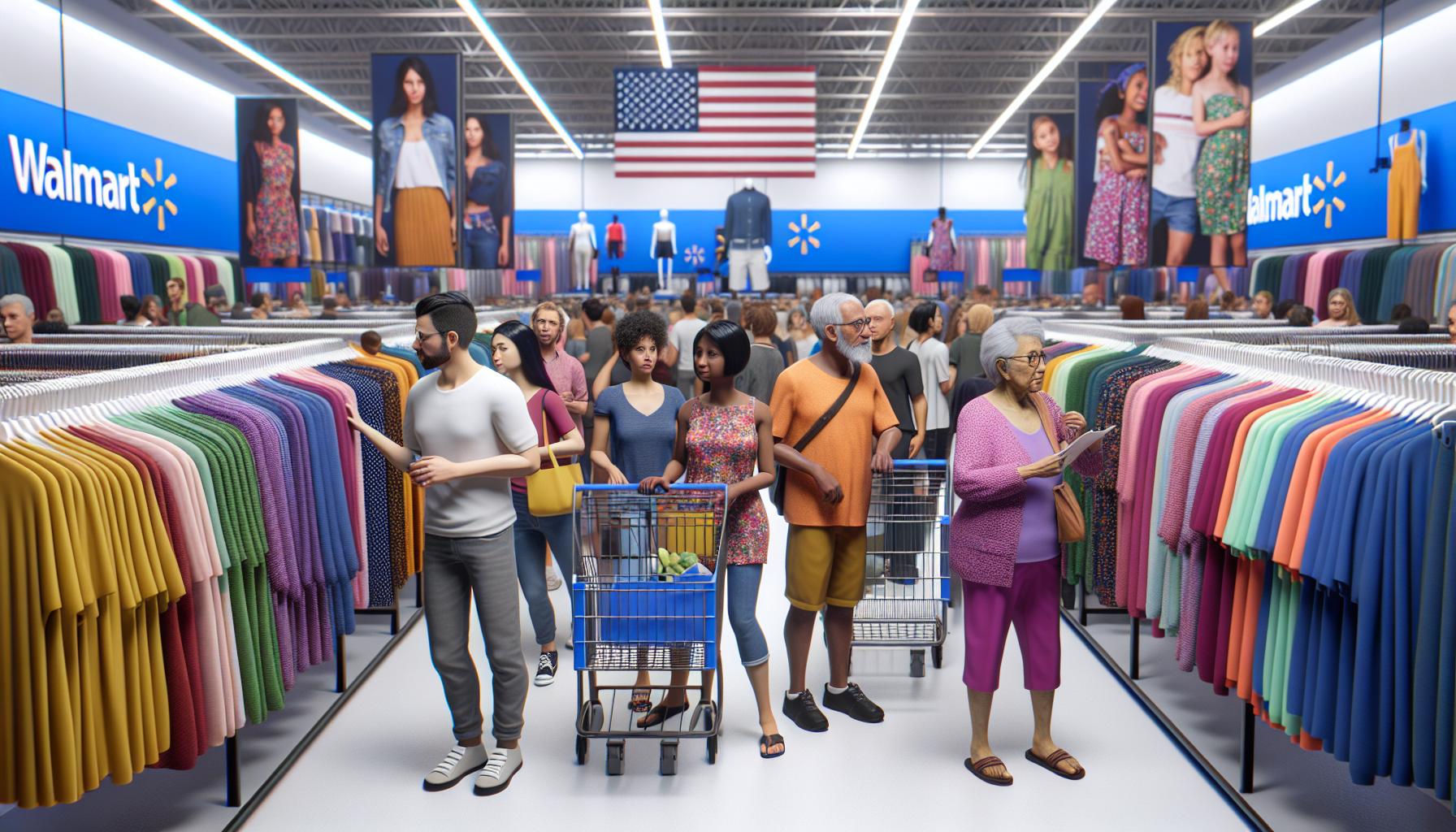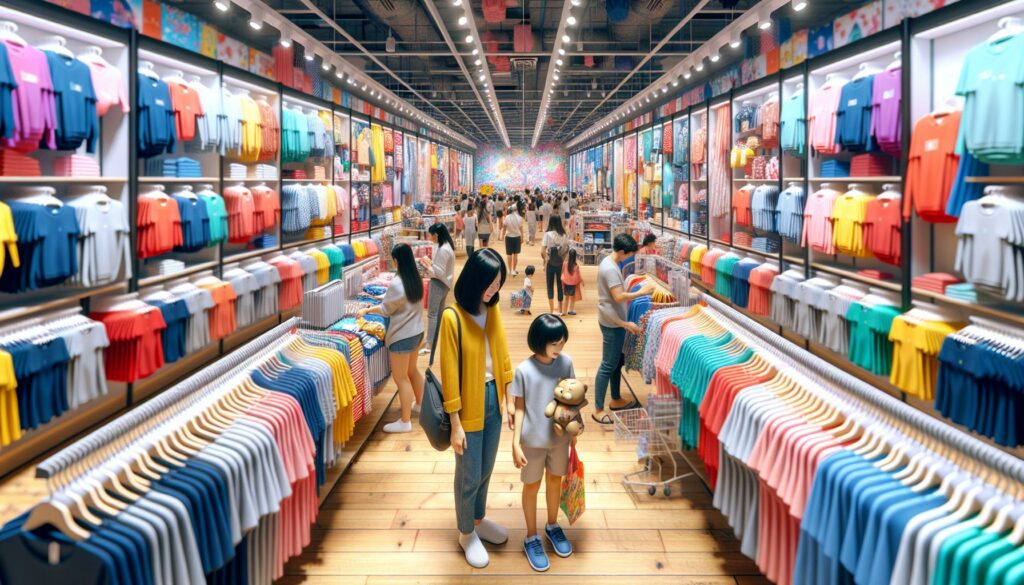When I think about fast fashion, Is Walmart Fast Fashion might not be the first brand that comes to mind. Yet, as I dive deeper into the world of retail, it’s clear that Walmart’s influence on fashion trends is significant. With its vast array of affordable clothing options, the retail giant often blurs the lines between convenience and the fast-paced fashion cycle that defines today’s apparel industry.
As consumers increasingly seek trendy styles at budget-friendly prices, Walmart has adapted its offerings to meet this demand. But is this shift indicative of a fast fashion model? In this article, I’ll explore the intricacies of Walmart’s clothing strategies and how they align with the fast fashion phenomenon. Let’s unravel the complexities of this retail titan and its role in shaping modern fashion.
- Walmart’s Influence on Fashion: While not a traditional fast fashion brand, Walmart significantly impacts fashion trends by offering affordable and trendy clothing options.
- Characteristics of Fast Fashion: Fast fashion involves rapid production and low-cost garments, leading to environmental concerns regarding overconsumption and waste.
- Business Model Comparison: Walmart employs supply chain strategies and inventory management akin to fast fashion brands, focusing on low prices and quick product turnover.
- Affordability vs. Quality: Walmart prioritizes affordability, which may compromise garment quality compared to traditional fast fashion brands that balance style with durability.
- Environmental Impact: The fast fashion model, adopted by Walmart, raises critical sustainability issues, including the production of synthetic materials and high textile waste generation.
- Consumer Behavior Trends: The constant rotation of styles at Walmart encourages impulsive purchasing, contributing to a cycle of overconsumption and environmental degradation.
Is Walmart Fast Fashion
Is Walmart Fast Fashion refers to the rapid production of inexpensive clothing, inspired by the latest trends in the fashion industry. This method emphasizes speed and low cost, allowing retailers to deliver trendy styles quickly to consumers. Companies achieve this by streamlining the supply chain, shortening the lead time from design to retail.
Consumers purchase fast fashion for several reasons. Affordability ranks high, making trendy garments accessible. The frequent rotation of styles keeps shoppers returning for new items. However, this cycle encourages overconsumption and waste, raising sustainability concerns.
The environmental impact of fast fashion is significant. Manufacturers often use cheap materials and exploit labor, resulting in adverse social and ecological effects. The lifecycle of fast fashion garments typically ends in landfills, contributing to the global waste crisis.
While Walmart may not fit the traditional fast fashion mold like Zara or H&M, its business model reflects key characteristics of this approach. Walmart’s extensive range of low-cost clothing enables it to meet the demands of consumers seeking trendy, affordable fashion options, ultimately influencing the broader fast fashion market.
Walmart’s Business Model


Is Walmart Fast Fashion reflects core aspects of fast fashion. The retailer focuses on affordability and quick adaptation to customer trends, which positions it as a significant player in this industry.
Low Prices and Rapid Turnover
Walmart maintains low prices through large-scale purchasing and efficient inventory management. The retailer rotates clothing styles frequently to align with the latest trends. This approach encourages customers to make impulse buys, leveraging the constant influx of new items to maintain consumer interest. Frequent markdowns also help to clear inventory, ensuring that Walmart remains competitive in the fast fashion landscape.
Supply Chain Strategies
Is Walmart Fast Fashion employs sophisticated supply chain strategies to ensure efficiency and cost-effectiveness. The use of technology allows for real-time inventory tracking and demand forecasting. By establishing strong relationships with suppliers, Walmart secures lower prices for materials. These strategies enable rapid replenishment of popular items while minimizing excess stock, supporting a quick turnaround of trendy apparel. Additionally, Walmart’s investment in logistics ensures products reach stores efficiently, enhancing its ability to respond to shifting consumer preferences in the fashion market.
Comparing Walmart to Traditional Fast Fashion Brands


Walmart’s clothing offerings share some similarities with traditional fast fashion brands, yet distinct differences in pricing and quality help define its unique position in the market.
Similarities in Product Offering
Is Walmart Fast Fashion provides a wide-ranging selection of clothing options, mirroring the trend-driven approach typical of fast fashion brands like Zara and H&M. Walmart’s inventory features styles that align with current fashion trends, enabling consumers to find affordable alternatives to designer looks. Frequent updates to their clothing selections ensure a rotation of styles, reflecting consumer demand for trendy apparel. Seasonal collections, including collaborations with popular designers, further enhance this alignment, allowing Walmart to compete within the fast fashion space while catering to diverse customer preferences.
Differences in Pricing and Quality
Walmart’s pricing strategy significantly differs from traditional fast fashion brands. While fast fashion retailers often price items based on brand image and perceived value, Walmart emphasizes low-cost options. This strategy attracts budget-conscious consumers seeking trendy fashion without the premium price tags usually associated with brand-name retailers.
Quality also varies between Walmart and traditional fast fashion brands. Although Walmart offers affordable clothing, the quality of materials used may not always match that of competitors. Many fast fashion retailers focus on delivering striking styles with superior fabric quality, whereas Walmart prioritizes affordability, which can lead to compromises in durability. Consequently, consumers may find that while Walmart’s clothing is budget-friendly, it may not possess the same longevity or craftsmanship as items from traditional fast fashion brands.
Environmental Impact


Is Walmart Fast Fashion on fashion extends beyond trends and pricing; it raises critical environmental concerns associated with fast fashion. The impact covers sustainability practices and consumer behavior.
Sustainability Concerns
Walmart’s clothing production often involves synthetic materials like polyester, which requires significant resources to produce and contributes to microplastic pollution. Additionally, the reliance on low-cost labor raises ethical concerns about labor practices and environmental standards in manufacturing countries. While Walmart promotes sustainability initiatives, such as sourcing cotton responsibly, the overall fast-fashion model encourages rapid turnover of cheap products, undermining long-term ecological practices.
Waste and Consumer Behavior
Fast fashion leads to overconsumption, with consumers frequently buying low-cost clothing items with little thought for longevity. Garments often end up in landfills after minimal use, contributing to the growing textile waste crisis. According to the Environmental Protection Agency, in 2018, around 11.3 million tons of textile waste ended up in U.S. landfills. Walmart’s strategy of quick style rotation and affordability perpetuates this cycle, as shoppers prioritize trends over responsible purchasing, further exacerbating environmental degradation.
Walmart’s role in the fast fashion landscape is complex. While it may not fit the traditional mold, its strategies align closely with the characteristics of fast fashion. The retailer’s focus on affordability and rapid style rotation caters to consumers seeking trendy options at low prices.
However, this approach raises significant sustainability concerns. The environmental impact of cheap materials and overconsumption can’t be ignored. As I reflect on Walmart’s influence on modern fashion, it’s clear that while it meets consumer demands, it also contributes to a cycle that challenges the principles of sustainability. Balancing affordability with ethical practices is essential for the future of fashion, and Walmart’s journey will be critical in shaping that narrative.

